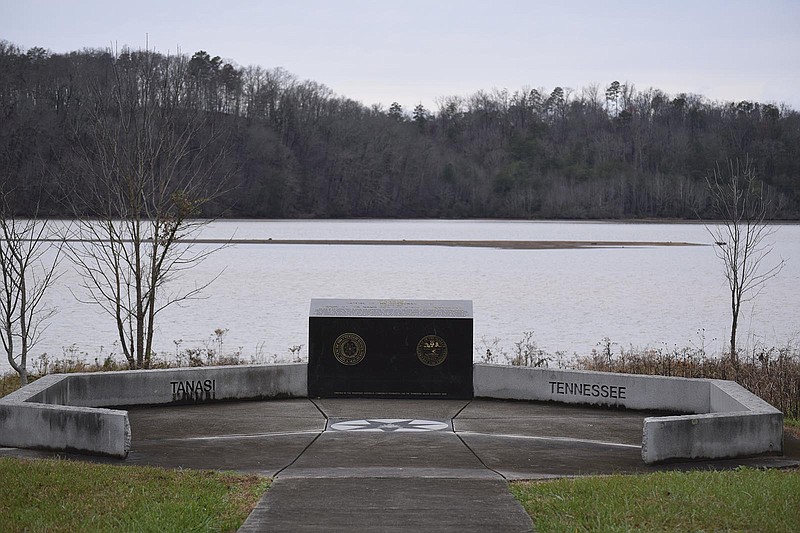Editor's note: Dr. James Livingood, distinguished UTC professor of history, discussed the evolution of Cherokee ways in his "Chattanooga: Illustrated History." Below are excerpts:
"Most Cherokee lived in log or frame houses and dressed as the frontiersmen except for the rather common use of a turban. Many developed extensive holdings characterized by a plantation economy; 207 Cherokees had Negro slaves.
"An interesting wedding in 1828 tells much about social developments. It was reported by Waterhunter, who served as translator. There were prayers and singing in Cherokee followed by a nuptial dinner and the marriage ceremony performed in English.
'The Bride is a quarter white, possesses a fine figure, [a] beautiful complexion, with dark hair and eyes; her features bear the evidence of amiability and good nature; and altogether she is an interesting woman, a member of the Methodist Church. The Bridegroom, a cousin of mine, is a full-bloodied Indian, of Aboriginal deep copper complexion, low in stature, fine figure, but does not possess a handsome face, though depicted upon it are the marks of honesty, fidelity and good nature. He was dressed in a clean northern domestic suit, and his bride in white cambric.
"Missionaries and circuit riders, by bringing their Christian messages to the Indians, did much to help them along the way to civilization. Moravians, Presbyterians, Methodists, and Baptists ran school and structured congregations. But the most influential work was conducted by the American Board of Commissioners for Foreign Missions, an interdenominational society of Congregationalists, Presbyterians, and Dutch Reformed Church members. In the midst of a wilderness on acres originally cleared by John McDonald, they built a mission station in 1817.
"Ministers, teachers, and workers from New England and the Middle Atlantic states came to the school, which took the name Brainerd to honor David Brainerd, a missionary to the Indians of New England who lived a century earlier. The Federal Government gave them financial aid and encouragement; on May 27, 1819, President (James) Monroe visited the remote establishment. Its chapel knew no color line as whites, Africans, and Indians worshiped together. Brainerd became the parent of 10 substations scattered throughout the Nation and deserves the fitting name Robert Sparks Walker gave it - Torchlights to the Cherokees.
"In 1825 a new missionary arrived at Brainerd. Samuel Austin Worcester, a college graduate with an aptitude for language, soon had an impact on the community which reached far beyond the walls of the mission school. He became aware of the work of the perceptive mixed-blood Sequoyah in developing a Cherokee written language and encouraged its practical adoption.
"Sequoyah, a native of East Tennessee, believed the white man's superior culture rested on his ability to use a written language and resolved to prepare an alphabet or syllabary in Cherokee. He labored without any knowledge of English or any formal education with the sole purpose of uplifting his people. Overcoming ridicule and frustration, he prepared 86 characters representing all the syllables of the Cherokee language. The simplicity of his system enabled uneducated Indians to learn to read and write within an extremely short time.
"Worcester was instrumental in getting the Indians to have type cast in Boston; the American Board agreed to pay for all the equipment needed, including a press, to fit out a printing office for which the Cherokee Nation reimbursed the society. On February 21, 1828, the first issue of a bilingual newspaper was published; its editor, a Brainerd-trained mixed blood who got advanced training at a New England school of the mission, was Elias Boudinot. The weekly, named the Cherokee Phoenix, announced in a prospectus:
"'We would now commit our feeble efforts to the good will and indulgence of the public, praying that God will attend them with His blessings and hoping for that happy period when all the Indian tribes of America shall arise Phoenix-like, from the ashes, and when the terms, "Indian depredation," "War-whoop," "scalping knife," and the like shall become obsolete, and forever be "buried deep under ground."'
"Few persons in world history accomplished a feat unassisted comparable to that of Sequoyah; the Cherokee awarded him an annual pension of $300 for life and presented him a medal. In a special ceremony John Ross stated: 'The great good designed by the author of human existence in directing your genius to this happy discovery cannot be fully estimated - it is incalculable.' The U.S. awarded Sequoyah $500 and later his name (spelled as Sequoia) was given to the giant redwood trees and a national park in California."
Frank "Mickey"Robbins, an investment adviser with Patten and Patten, edited excerpts for this column. For more, visit Chattahistoricalassoc.org.
